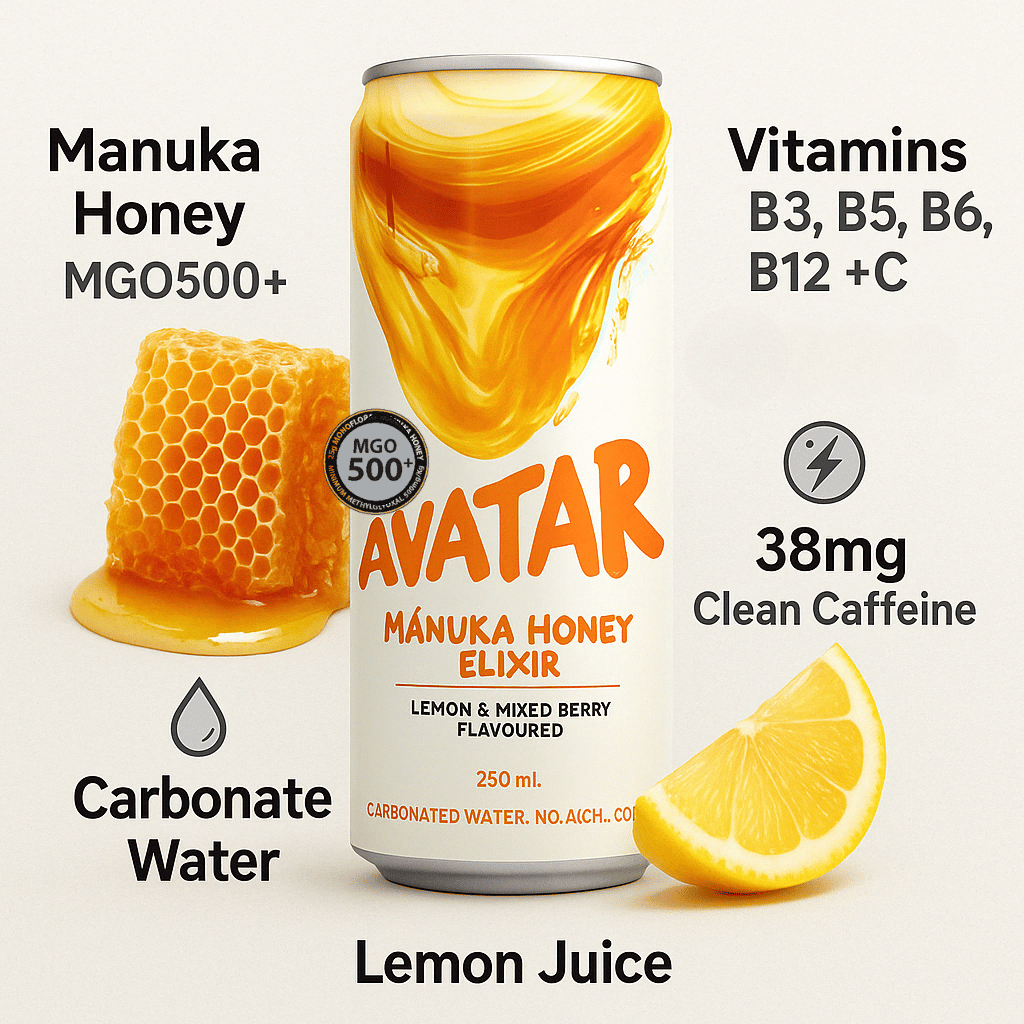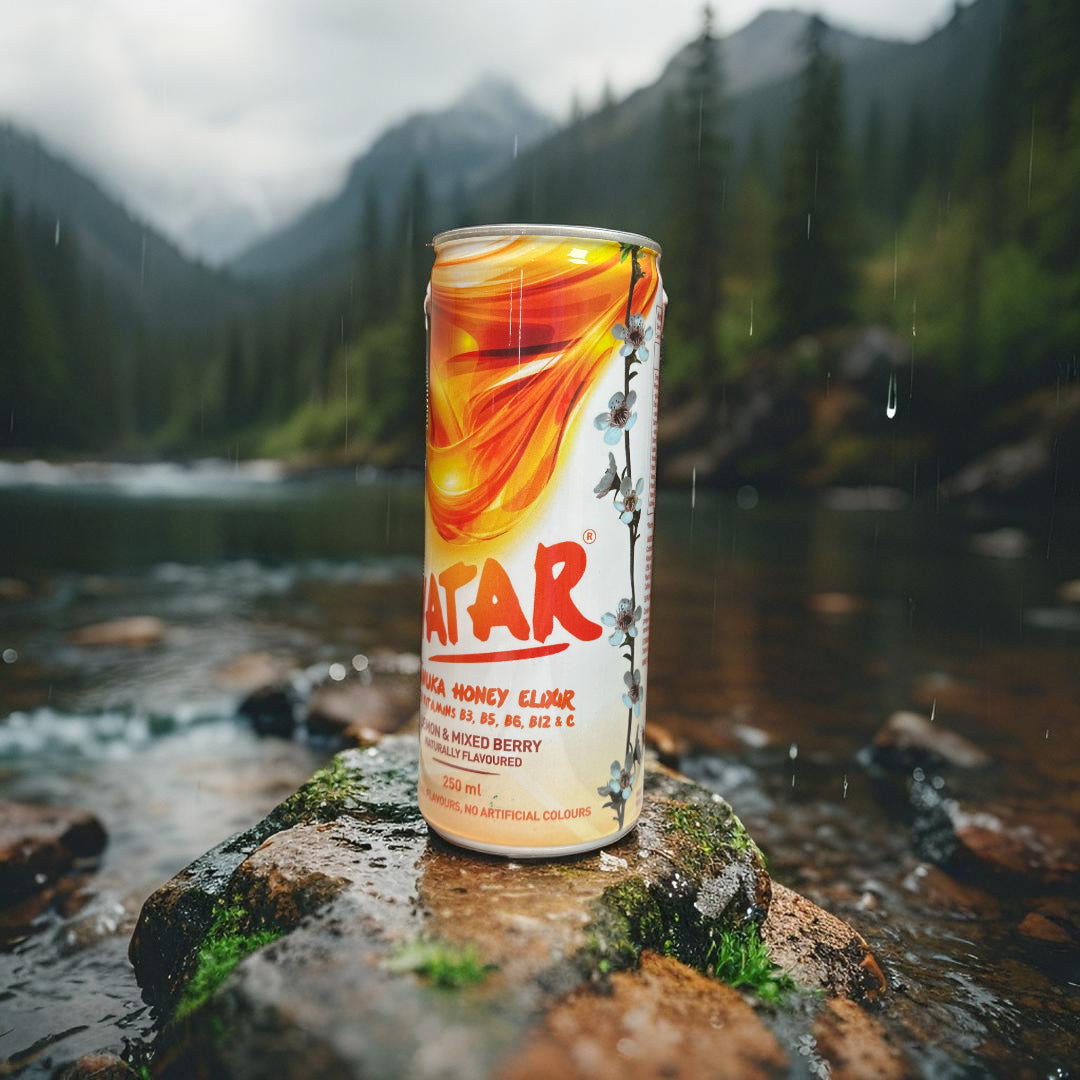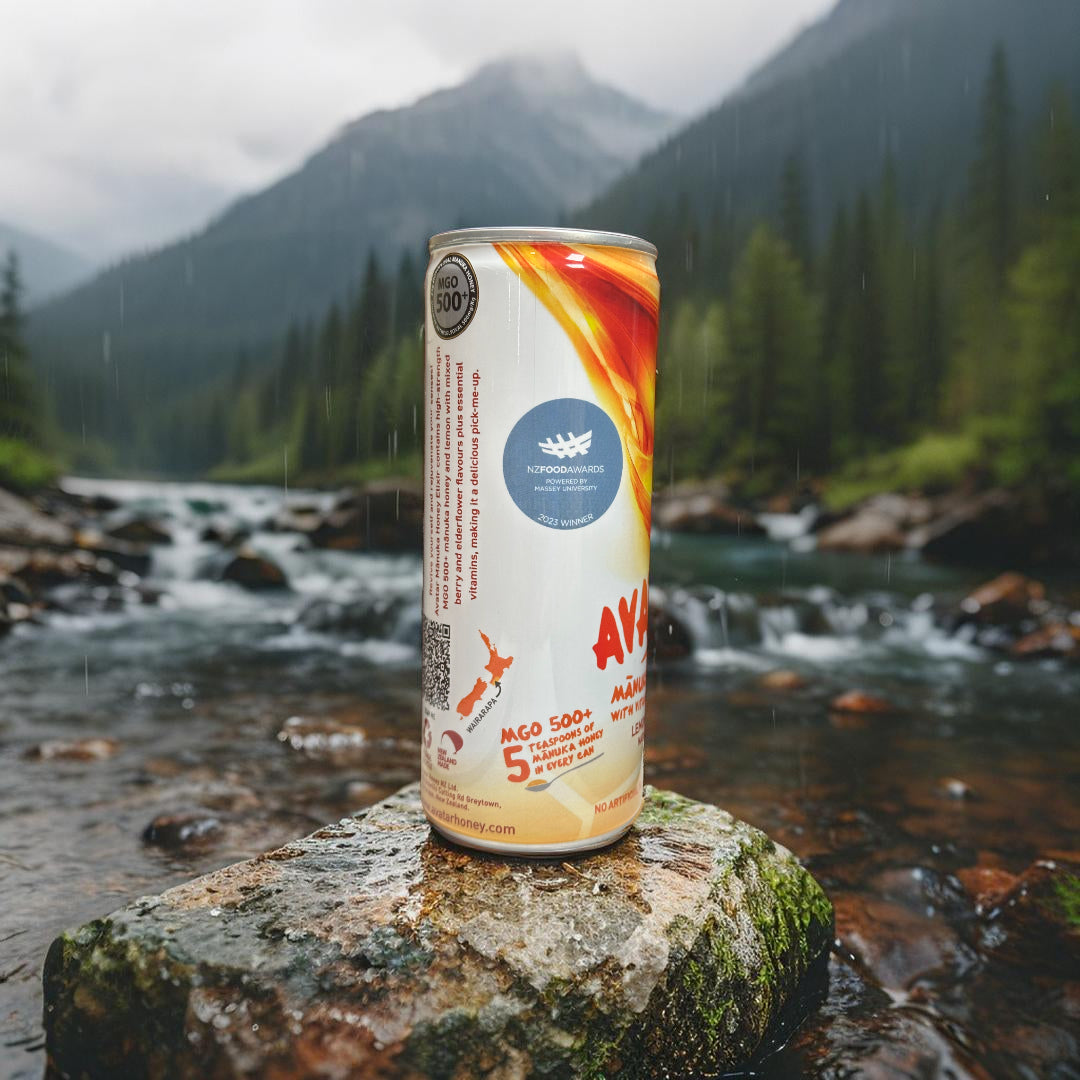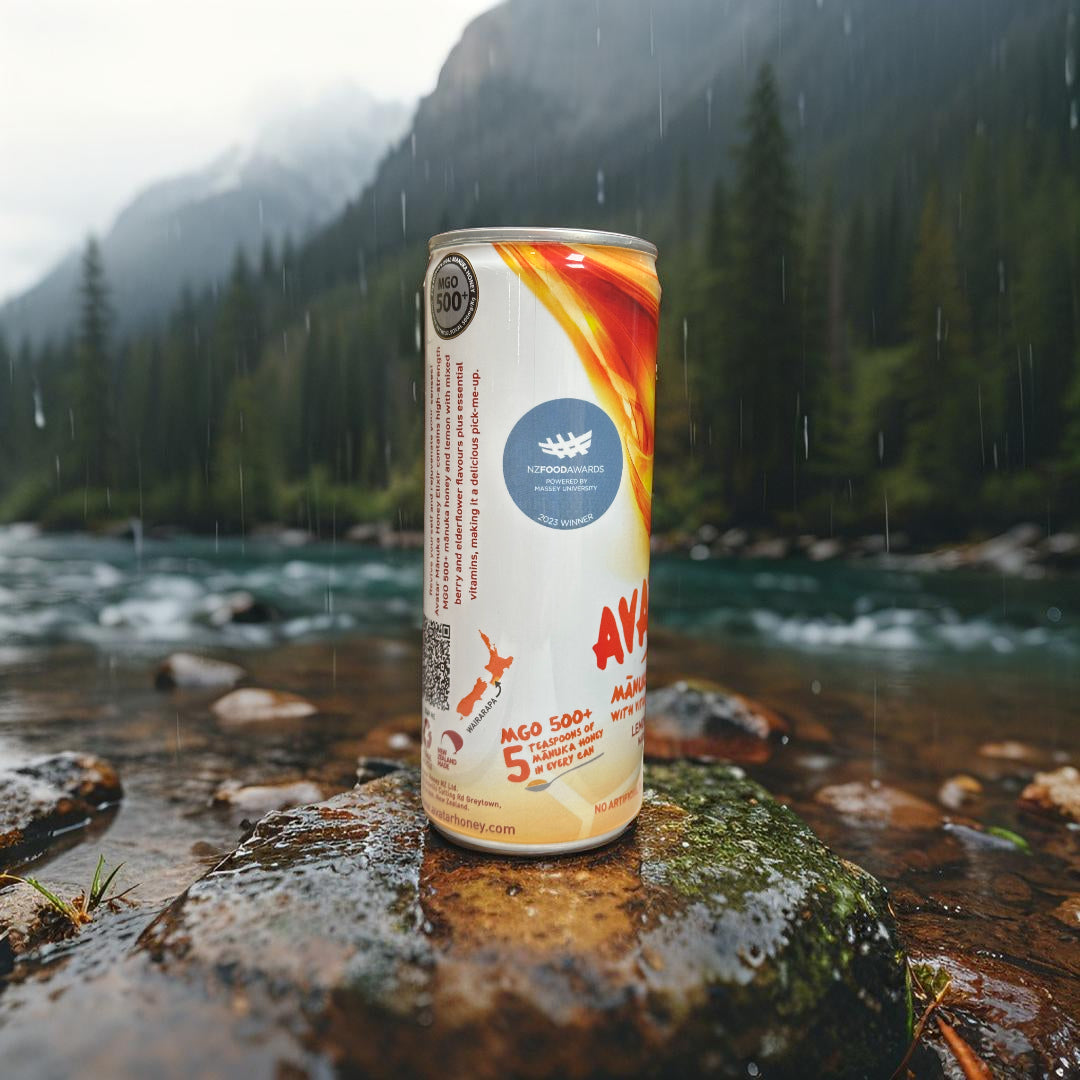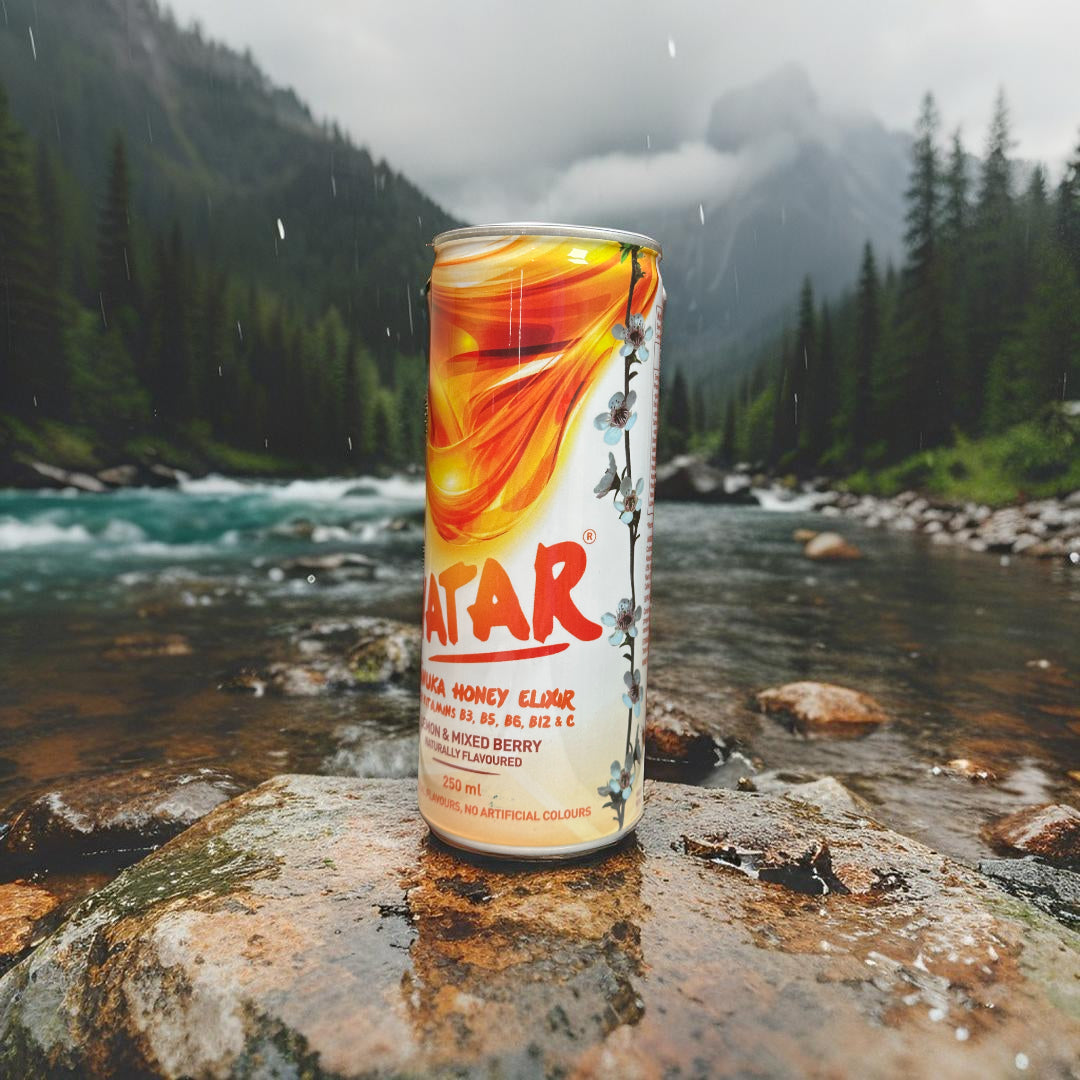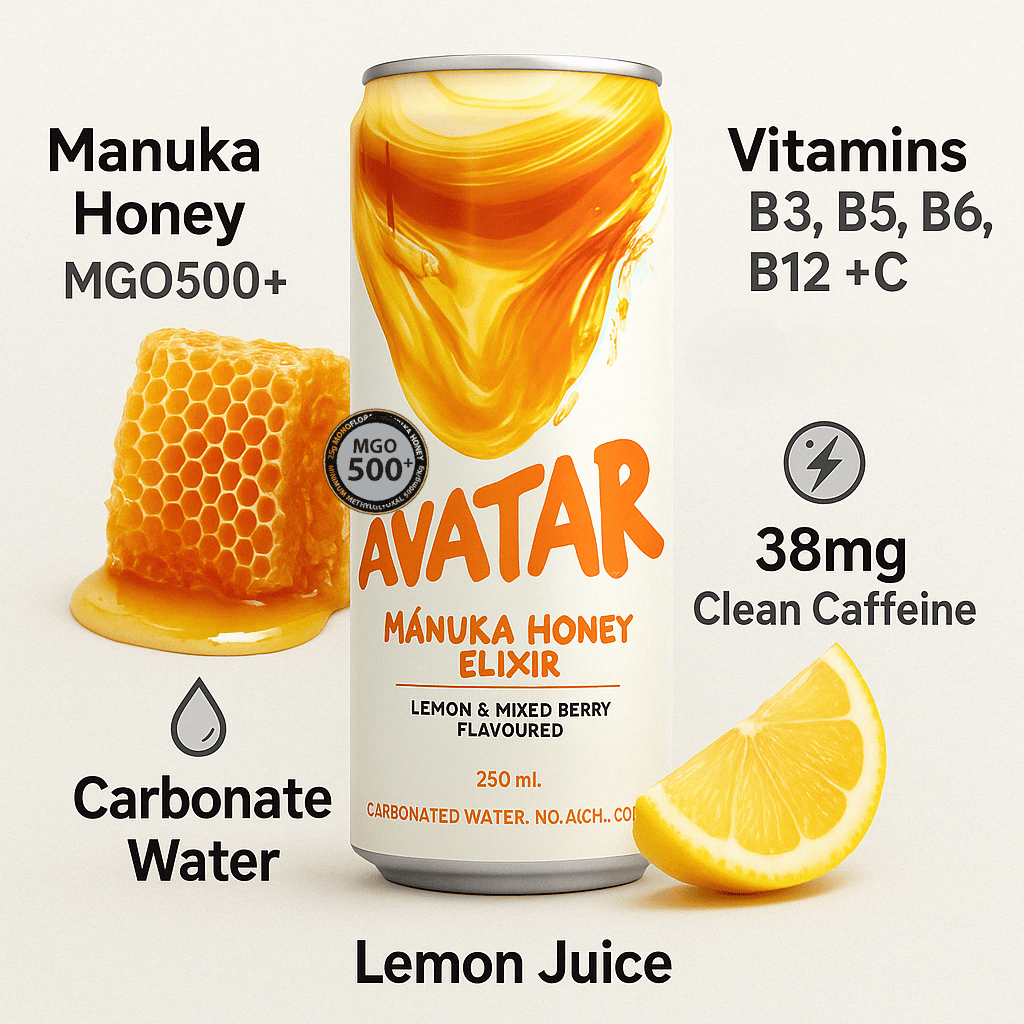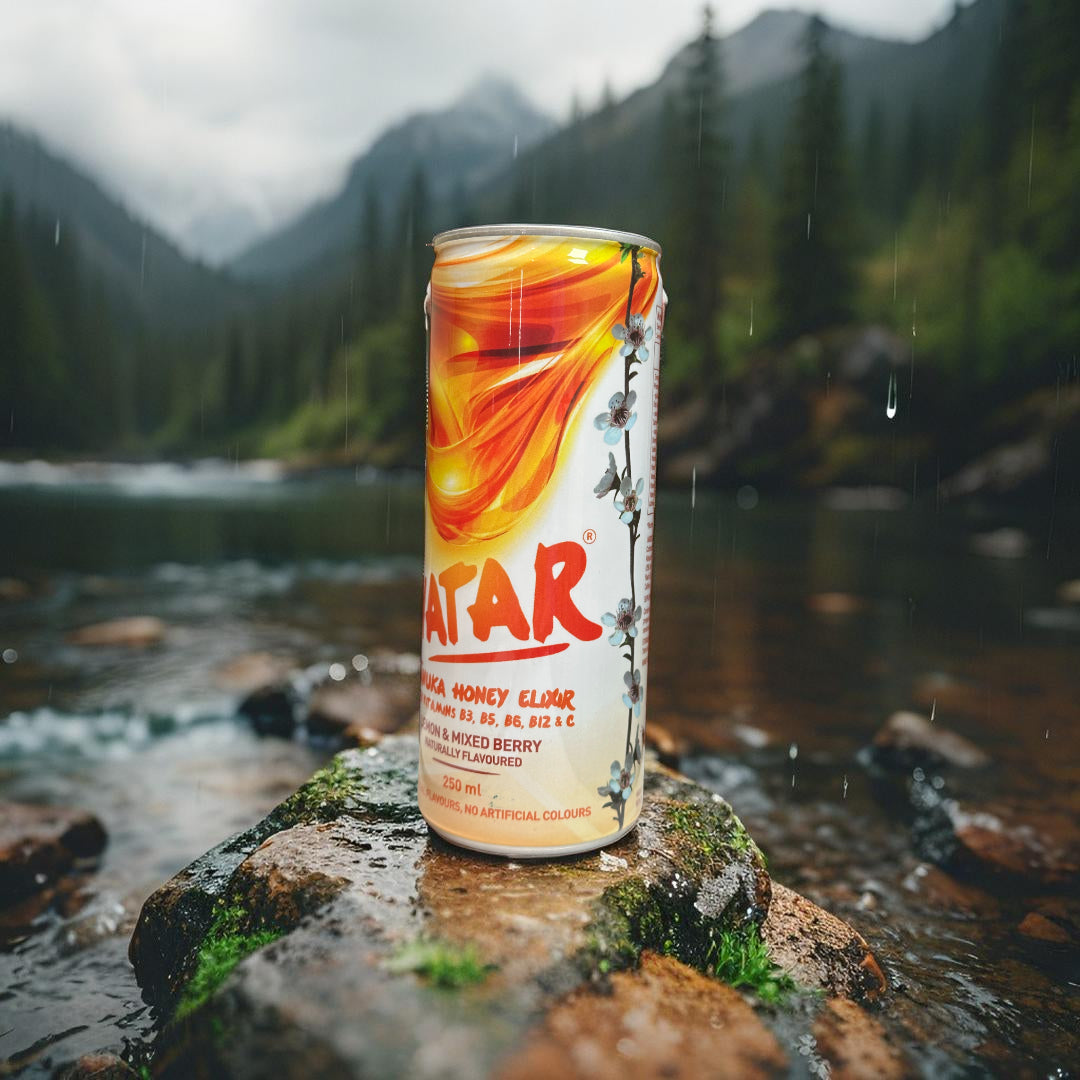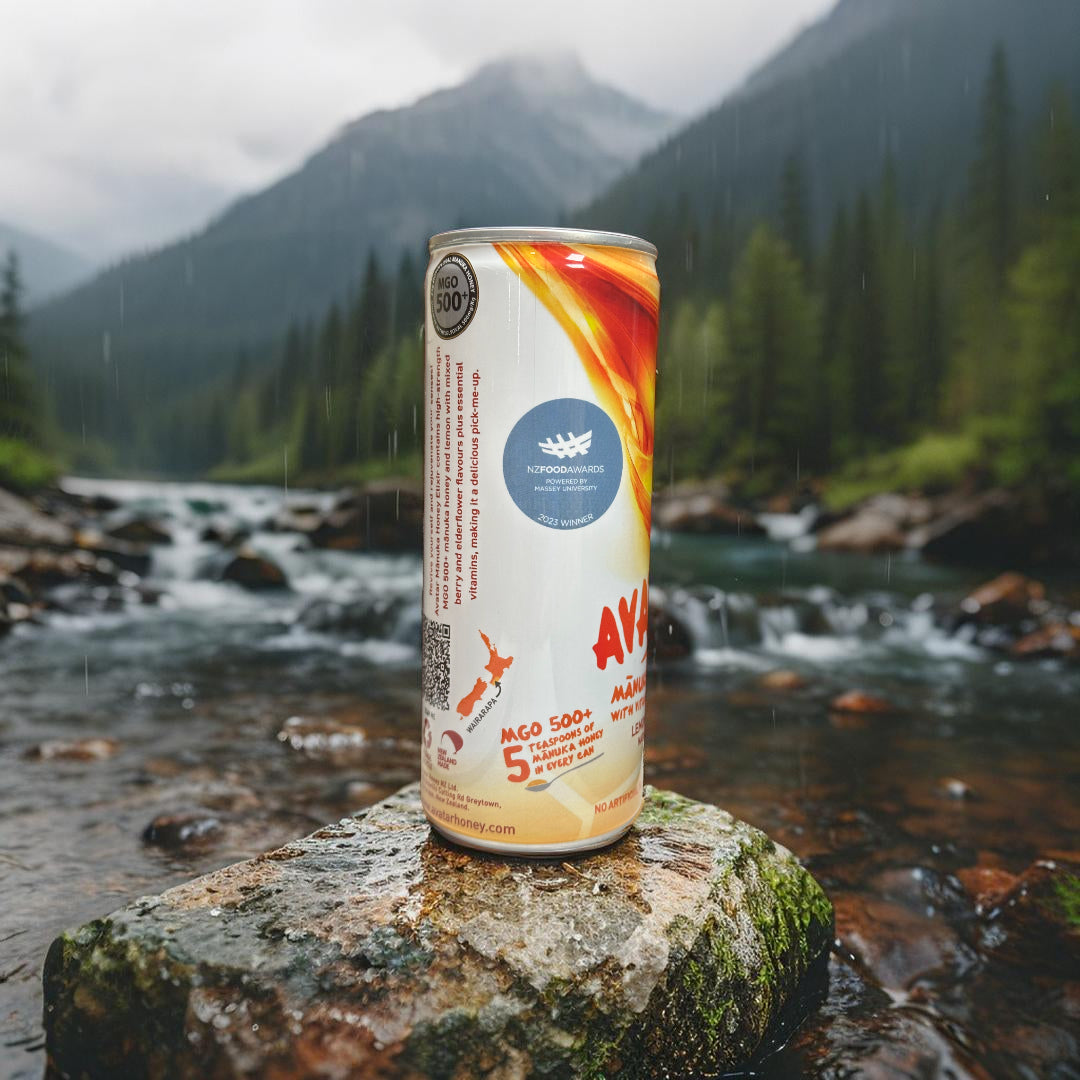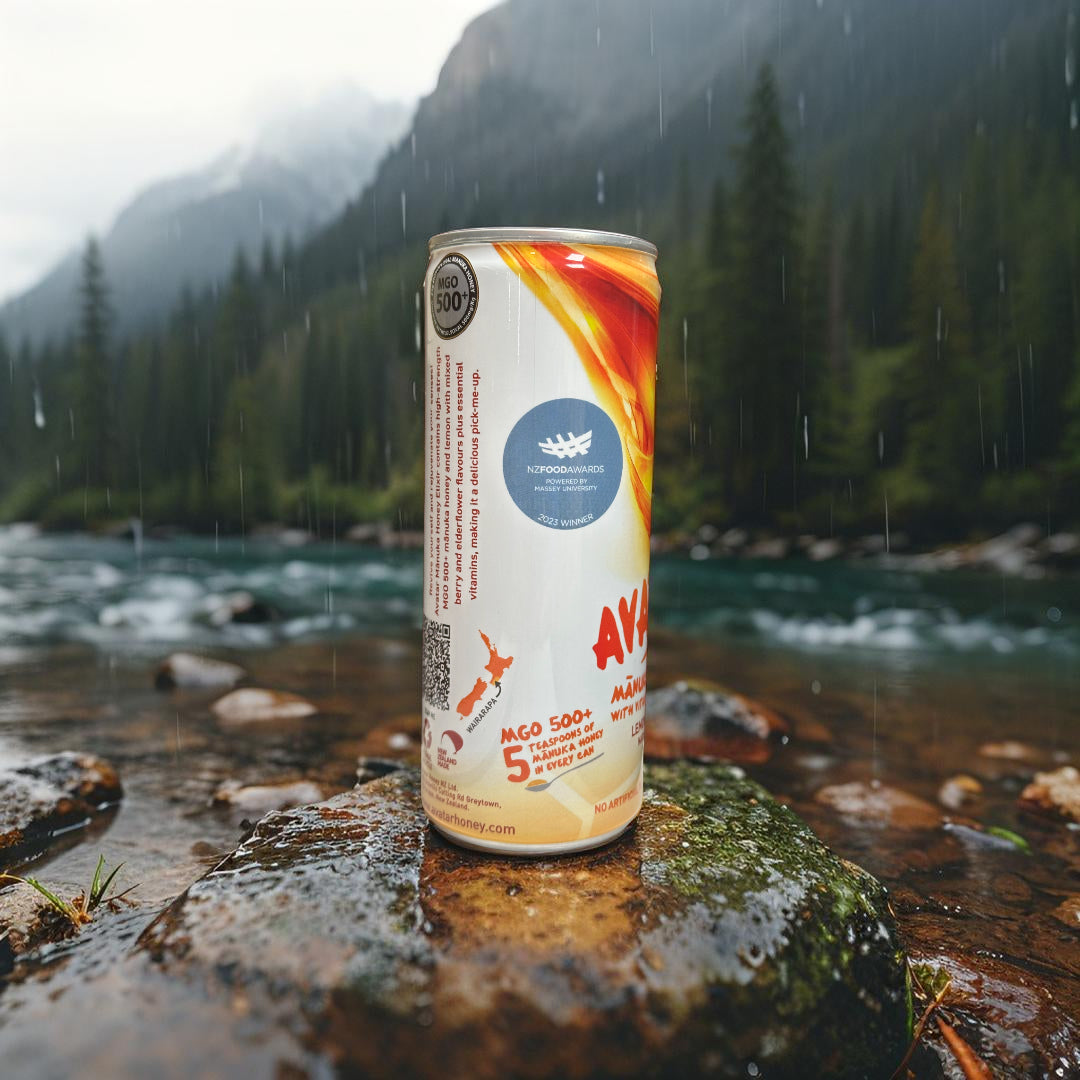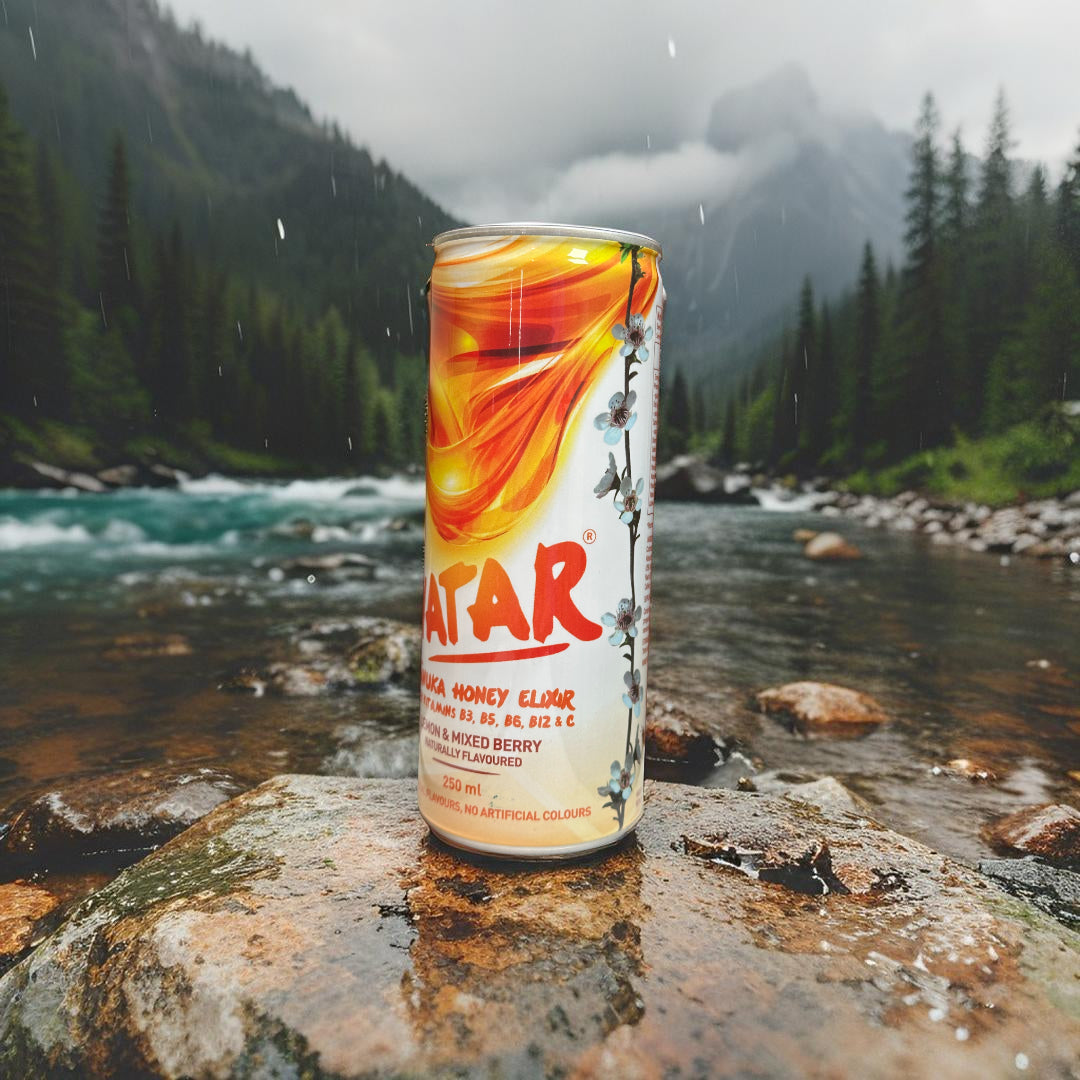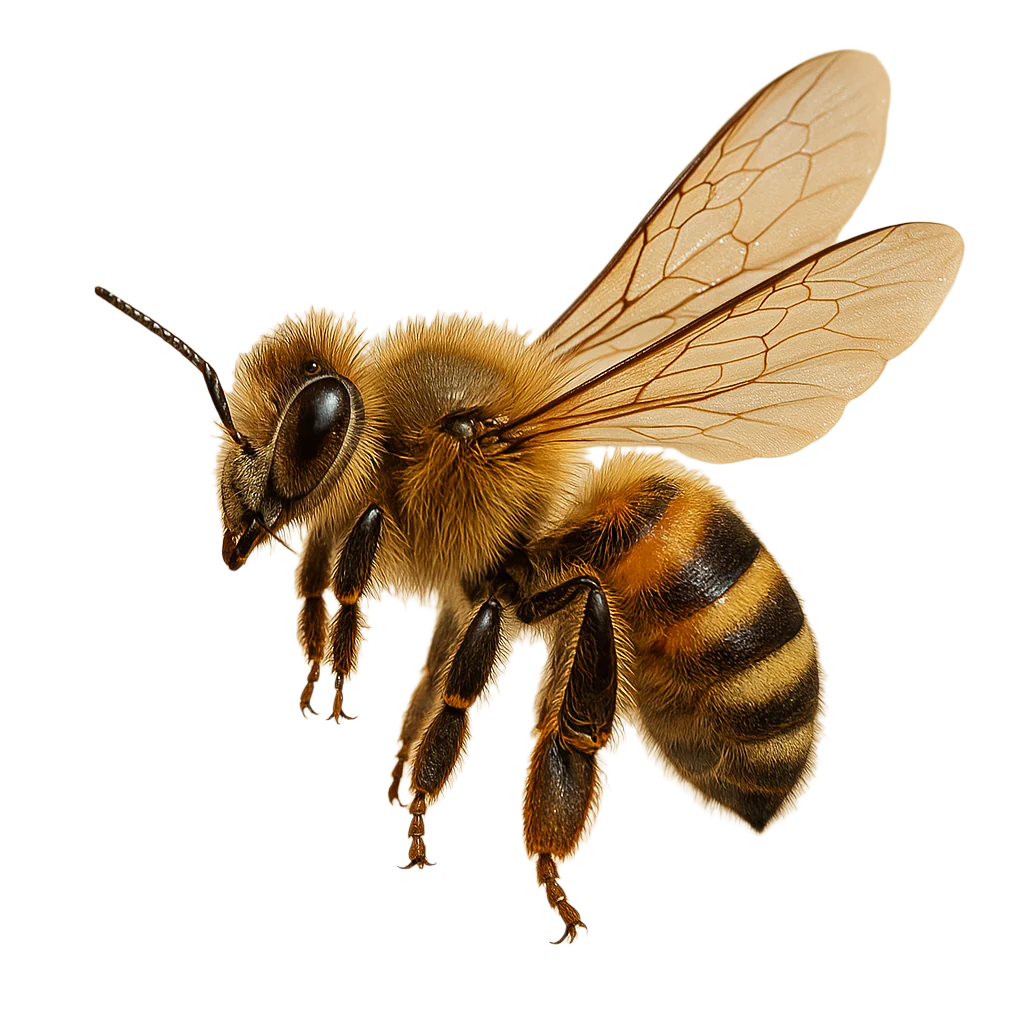🐝 The Mānuka Honey Bee: Tiny Worker, Massive Impact
Every sip of Avatar Elixir carries the work of thousands of bees literally. But these aren’t just any bees. They’re Mānuka honey bees, working tirelessly in remote New Zealand landscapes, chasing one of the world’s rarest nectar sources. Their life may be short, but it’s incredibly purposeful.
🧬 The Honey Bee Life Cycle (and Why Mānuka Season Is So Intense)
The life cycle of a honey bee moves fast. It begins as an egg laid by the queen, hatches into a larva, pupates, and emerges as an adult in just 21 days (for workers). From there, her duties evolve through life stages:
- 🍼 Nurse Bee (Days 1–10): Cares for larvae
- 🛠️ House Bee (Days 11–20): Cleans, builds comb, produces wax, processes nectar
- 🌸 Forager Bee (Days 21–end): Collects nectar and pollen — including Mānuka nectar during bloom season
Life expectancy of a honey bee during peak season? Just 4 to 6 weeks. It’s a short life and much of it depends on the weather.
🌼 Why Mānuka Nectar Is So Hard to Catch
The Mānuka flower only blooms for 2 to 6 weeks a year, depending on wind, rain, and temperature. When it does, bees race against the clock to gather nectar. Poor weather can ground foragers for days. In rough seasons, they may only have 14 good days to collect the raw material that becomes MGO-rich Mānuka honey.
🔄 How Nectar Becomes Honey
When a worker bee returns from a foraging mission, she passes nectar mouth-to-mouth to a house bee. That bee adds enzymes, reducing water content. The nectar is stored in wax comb and fanned by hundreds of tiny wings until it thickens into honey — ready for the hive, or for us.
And here's a fun fact: a bee may visit 2,000 flowers a day, but in her entire life, she produces just 1/12th of a teaspoon of honey.
🍯 From Bee to Bottle: What Makes Mānuka Honey Different
The nectar from Mānuka flowers is rich in a compound called dihydroxyacetone (DHA), which later converts into methylglyoxal (MGO) — the secret behind Manuka honey’s famed potency. Not all flowers produce the same amount of DHA, and not all bees collect equal nectar. It’s nature’s lottery — and it makes every batch of honey unique.
Learn more about MGO ratings here →
🌧️ Weather, Workload, and the Hive’s Survival Plan
When bad weather hits, heavy wind or cold rain, bees don’t fly. They cluster inside the hive to stay warm, feeding on stored honey. These are vulnerable days. If nectar hasn’t been gathered, they can’t make more. That’s why Mānuka season is make-or-break for both beekeepers and bees.
🧠 Castes of the Colony: Workers, Drones, and the Queen
Each bee has a role:
- Worker bees: Sterile females, making up 95% of the hive. They do everything.
- Drones: Males, existing only to mate. No stingers. No foraging. Kicked out before winter.
- Queen: The hive’s mother, laying up to 2,000 eggs a day. A story for another blog. 👑
📈 Why This Matters to Your Elixir
Understanding the honey bee life cycle helps explain why Avatar Elixir isn’t just a sweet drink, it’s a tribute to precision, effort, and natural timing. Our bees work in harsh conditions, on short timelines, gathering rare nectar to help create something extraordinary. We honour that by making every can count.
Try the elixir powered by bees →
*Note: This article is for educational purposes only and not medical advice. Honey should not be given to infants under 1 year of age.




